If you are searching for a dog and feel torn between admiration for impressive physical traits and fear of choosing a breed with a shorter lifespan, you are not alone. Many people face this uncertainty.
On one hand, certain dogs possess remarkable beauty, strength, or presence, yet on the other hand, these same qualities often mean their years are fewer. It can be difficult to navigate this balance, especially when emotions and practicality collide.
Understanding why some dogs naturally live shorter lives can bring clarity and prevent heartache later. Their shorter lifespan is not your fault. It is rooted in growth patterns, genetics, and the way their bodies carry weight and energy. When you know what to expect, you can prepare your heart and home more thoughtfully.
In this article, you will find the dogs whose lives tend to be brief and the reasons behind the shortened time you share with them.
Key Takeaways
Something is touching about giant dogs whose gentle nature comes with fewer years, and this becomes clearer once you learn how their bodies handle their size.
Great Danes and Irish Wolfhounds look calm and steady, yet their hearts and joints carry more strain than most people realize.
Bullmastiffs and Leonbergers face similar challenges because deep chests and fast growth create risks that owners learn to watch with care.
After going through all seven breeds, the pattern shows how their large size and health needs fit together and why early awareness helps families prepare with confidence.
Dog Breeds That Don’t Live as Long
1. Great Dane

Great Danes are known for their calm nature, and many families appreciate how soft their personality feels in everyday life. Their massive size, however, brings responsibilities that go beyond routine care.
The breed needs an owner who understands how body structure and rapid growth can affect long-term health.
Size That Brings Serious Health Risks
Because of their frame, Great Danes face certain medical conditions more often than smaller breeds, and this is one of the main reasons they fall into the category of dog breeds that don’t live as long. Their vulnerability to issues like heart disease and joint complications often appears earlier in life.
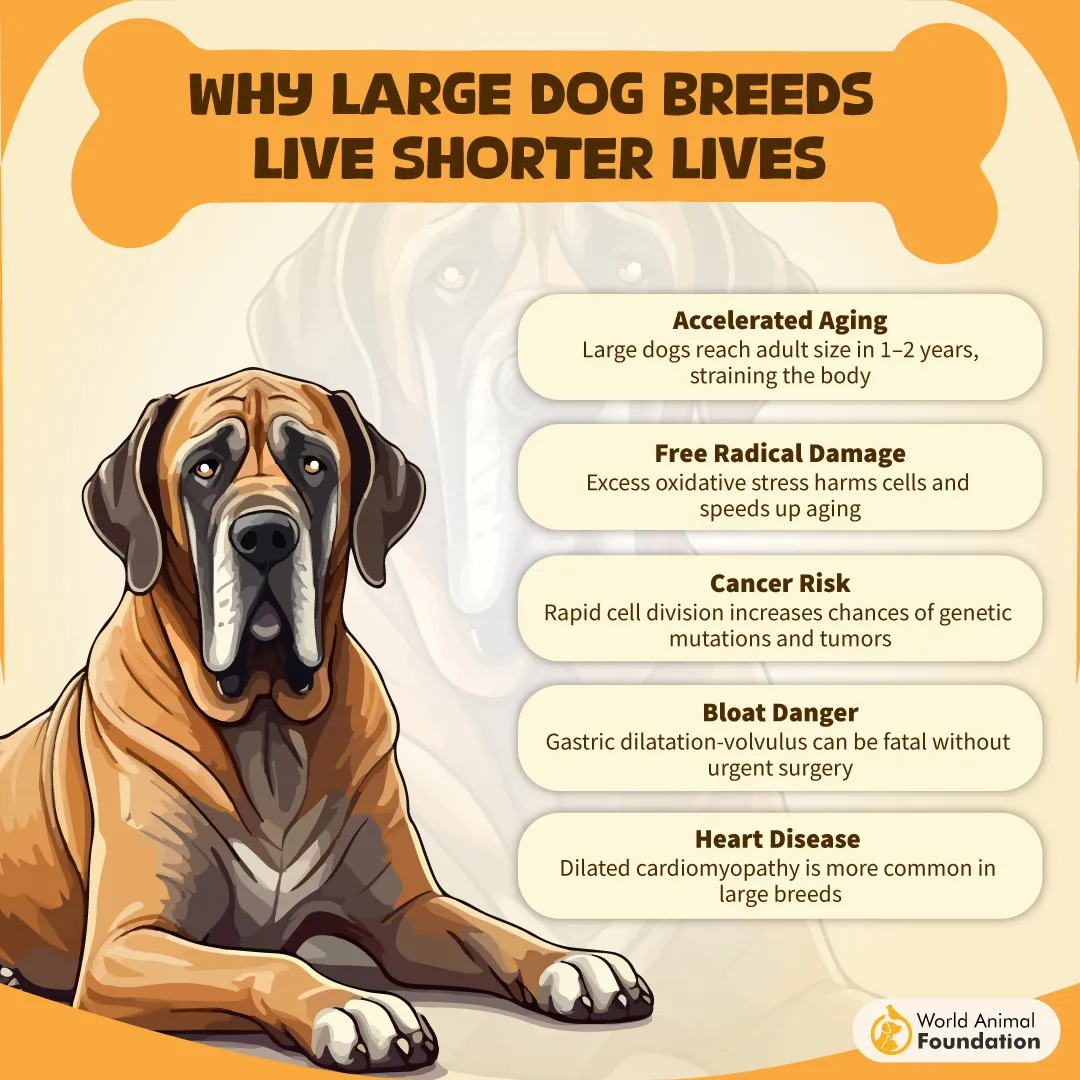
A few crucial points connect directly to their shorter lifespan:
Higher risk of bloat that can progress quickly
Greater strain on the heart due to their size
Increased likelihood of mobility-related problems
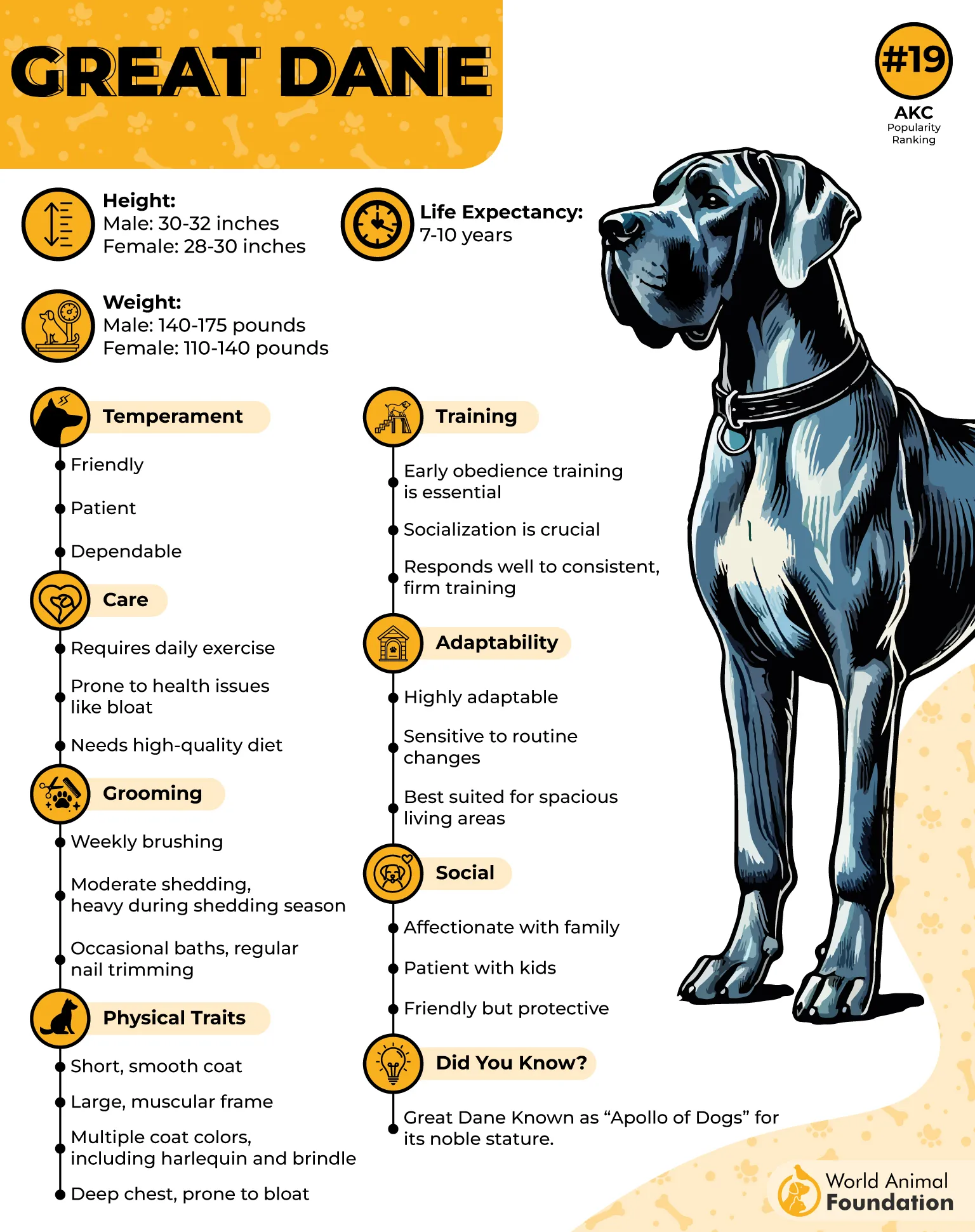
Health Screening That Supports Better Outcomes
The breed community strongly encourages regular medical evaluations, especially for the heart, hips, thyroid, and eyes, as the AKC suggests. These checks help identify conditions that may affect Danes during their shorter lifespan.
2. Bullmastiff
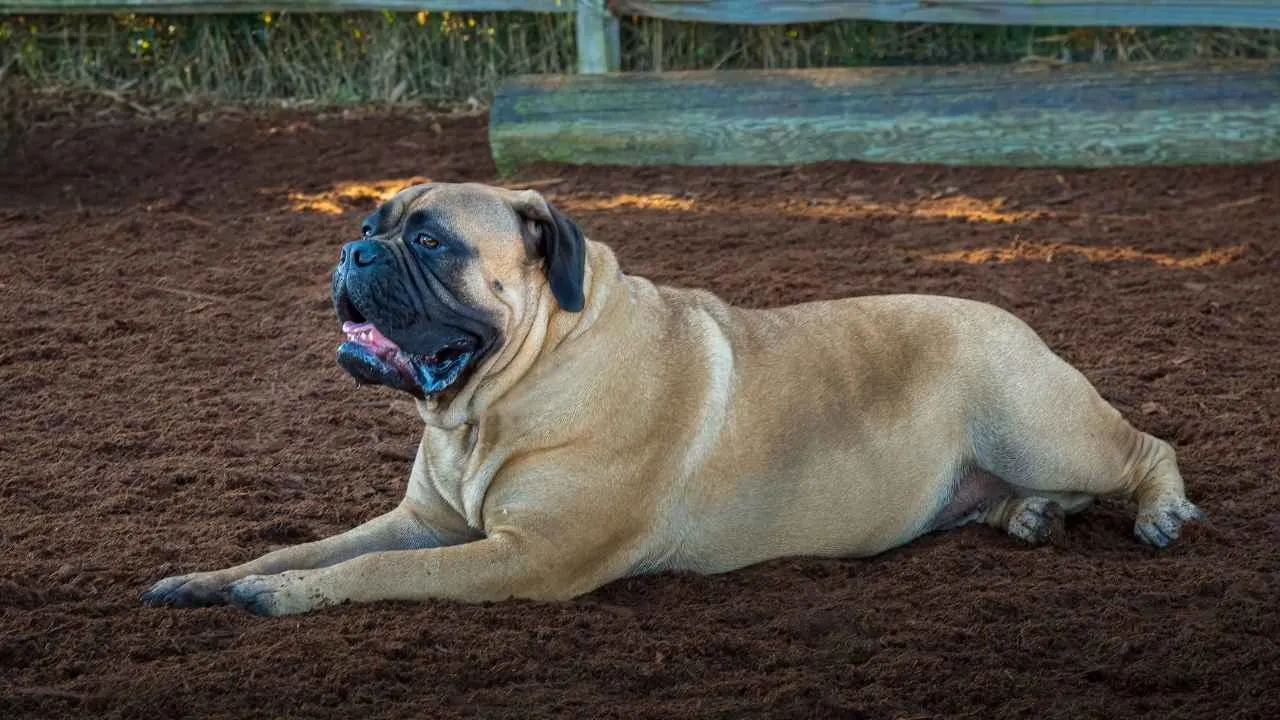
The Bullmastiff stands out for its steady nature, paired with a strong presence that commands attention. Its broad head and dark eyes give it a watchful look that many families find reassuring. This composed temperament often masks how quickly it can respond when something feels out of place.
Built for Demanding Roles
Generations of purposeful breeding created a dog that relies on both physical strength and sharp awareness. Even with its heavy structure, it moves with surprising control when assessing unfamiliar situations.
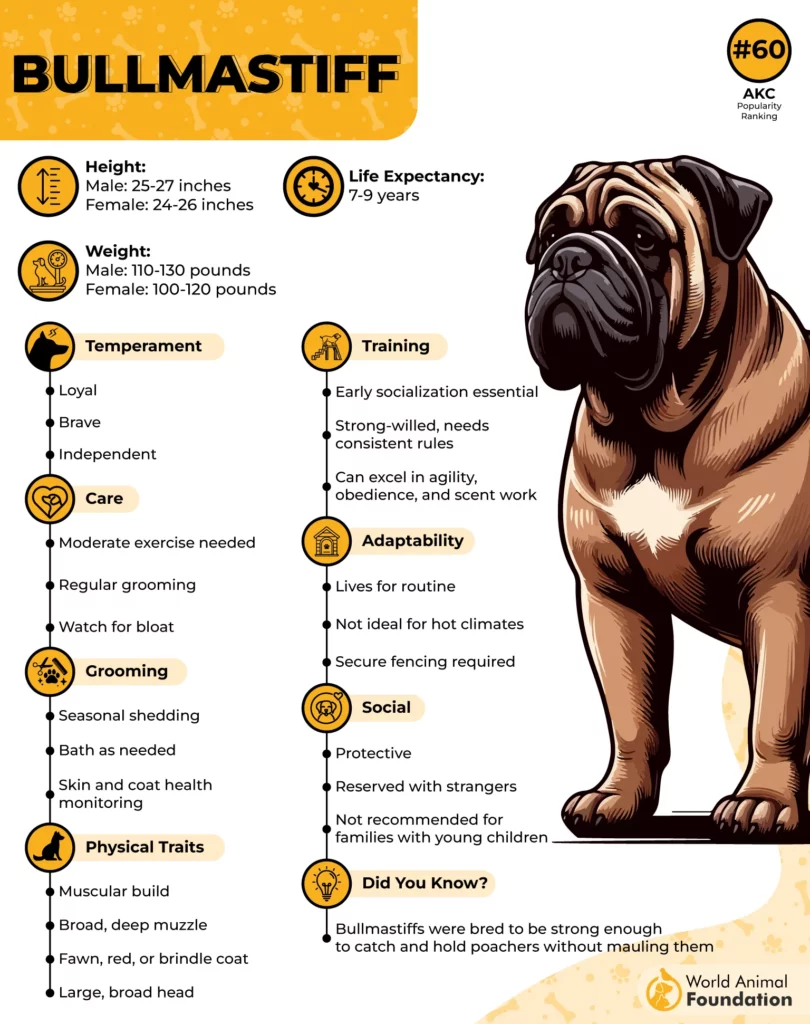
Here is a closer look at qualities that inform its shorter lifespan:
Prone to cardiac and joint concerns
Higher risk of certain cancers, including bone cancer
Susceptible to bloat without timely care
Steady Indoors, Serious When Needed
Many Bullmastiffs settle easily at home, remaining gentle around people they know well. Their calm side often makes their protective instincts even more effective because the shift in behavior is clear when danger is near. This balance of warmth and alertness adds to their appeal but also highlights the responsibility that comes with the breed.
3. Irish Wolfhound

The Irish Wolfhound carries a calm and dignified presence that immediately sets the tone when it enters a space. Its relaxed nature makes people forget that this breed once chased down powerful prey.
That combination of grace and sheer size places it among the dogs known for shorter lifespans, especially when compared with smaller breeds.
Built for Speed and Power
Its frame resembles a larger, more muscular version of a Greyhound, giving it impressive acceleration during a gallop. This athletic build contributes to the physical demands placed on the body over the years. This fits the overall pattern seen in giant breeds, and a few points help explain why.
These points paint the picture well:
Their massive structure puts extra strain on the heart
Deep chests increase the risk of bloat
They mature quickly, which can impact long-term health

Health Factors That Influence Longevity
Veterinarians familiar with sighthounds often highlight how essential regular screenings are for Wolfhounds. Conditions such as heart disease, certain cancers, and liver shunt are monitored closely in reputable breeding programs, as the AKC notes.
Note: Irish Wolfhounds benefit from annual exams that include an EKG, especially because cardiac conditions can progress quietly.
4. Newfoundland
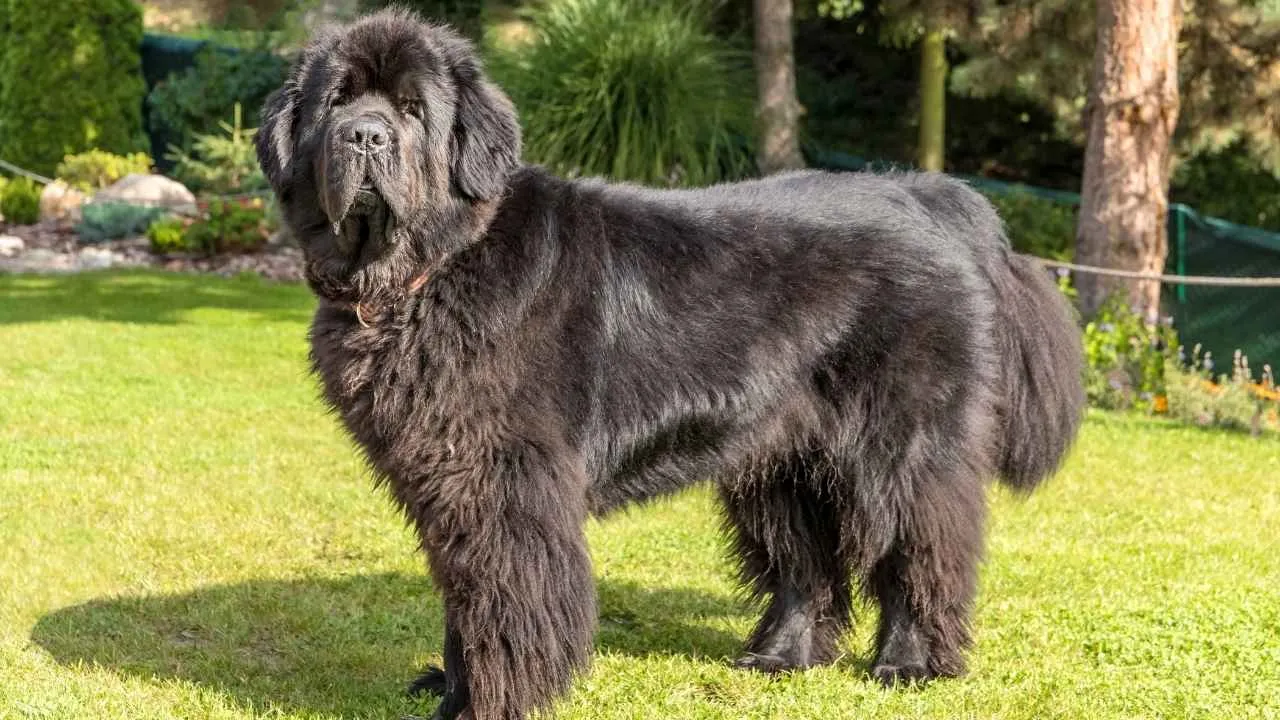
Newfoundlands are known for their calm, steady nature that fills a home with a sense of safety. Their size makes them unforgettable, yet it’s their patience that people admire most. These dogs intuitively settle into the rhythm of the household.
Why Their Health Needs Close Attention
This breed’s large build places extra pressure on joints and the heart, which connects directly to their shorter lifespan. Responsible breeders routinely screen for hip and elbow issues, as well as cardiac concerns that can appear early.
These points capture how their health shapes their average life expectancy:
Prone to inherited orthopedic problems
Heart conditions often require lifelong monitoring
Regular vet checks help manage risks earlier
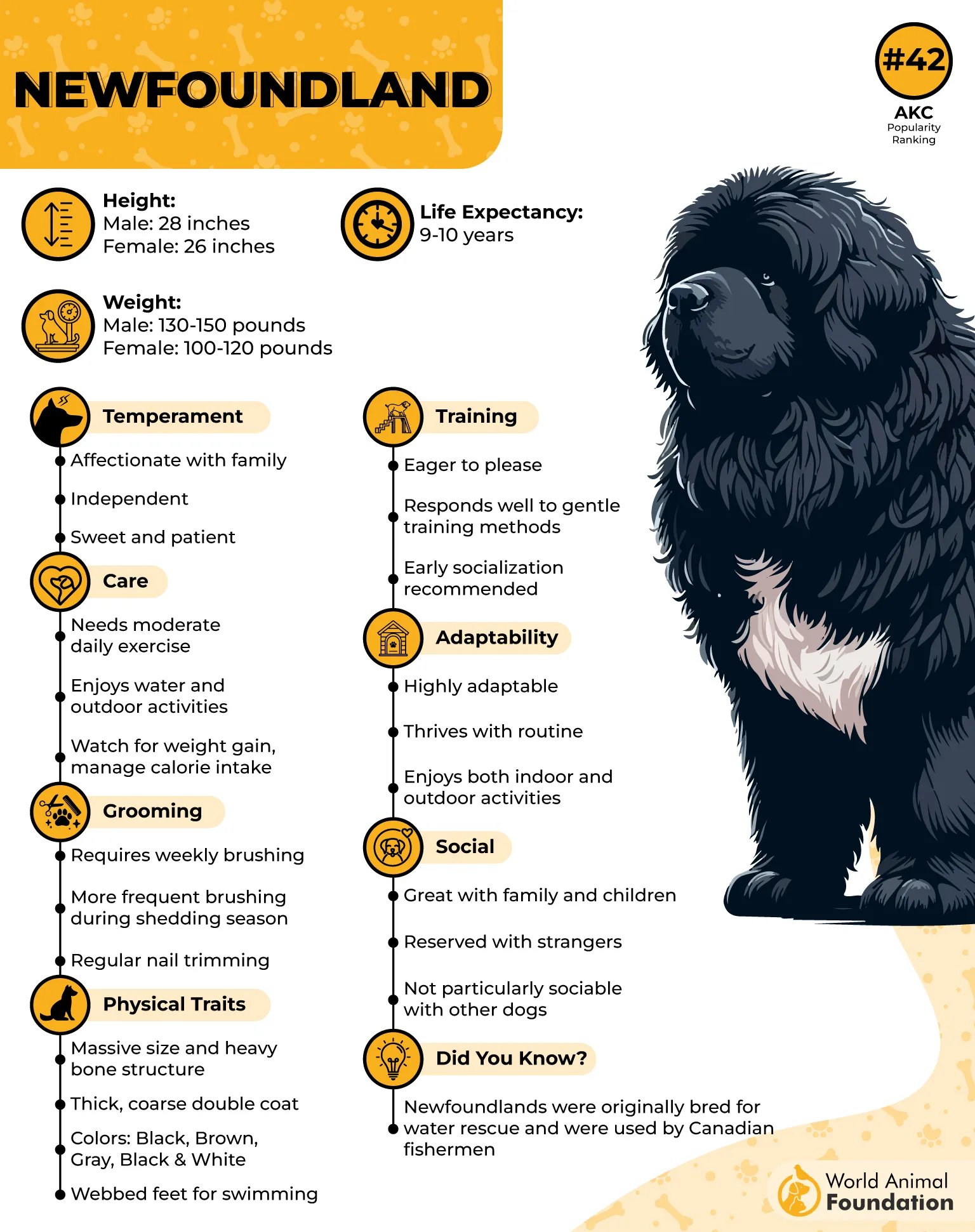
Extra Care Around Their Daily Routine
As per PetMD, their drooping ears make them more susceptible to moisture buildup, so routine checks keep infections away. Owners also stay mindful of any changes in movement or energy since large breeds often hide discomfort. These small habits support comfort throughout their shorter lifespan.
5. Neapolitan Mastiff
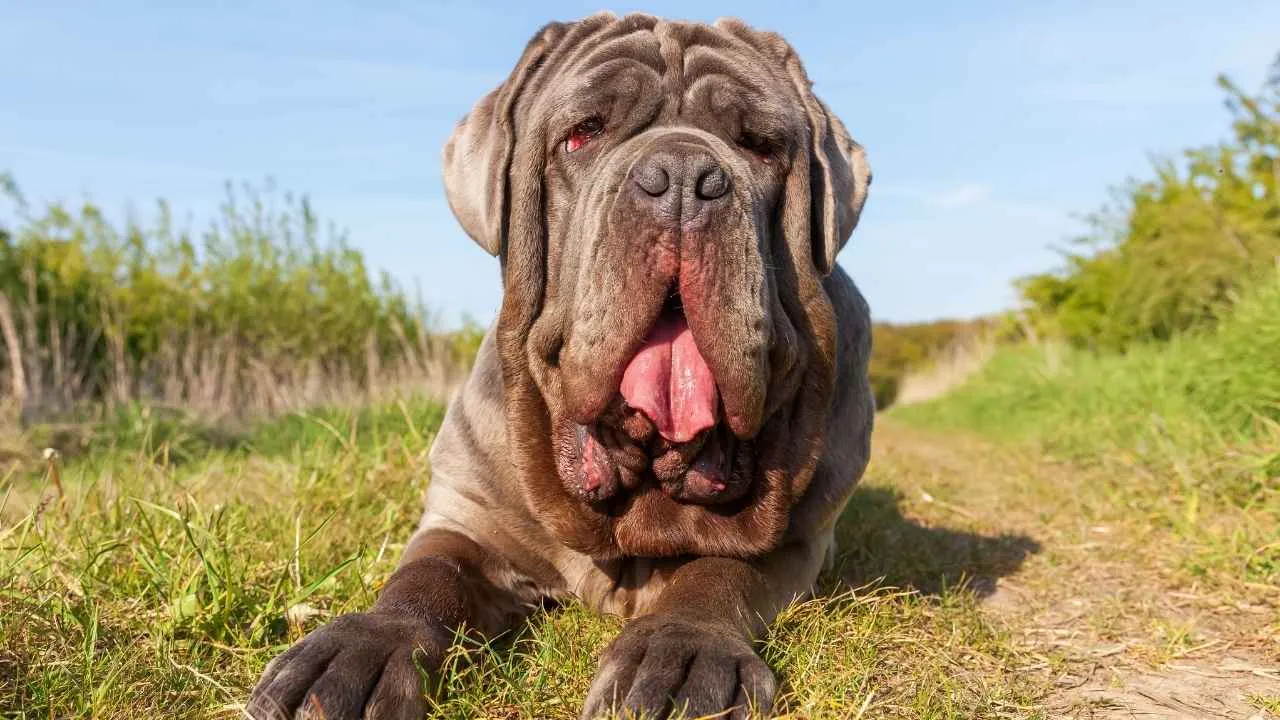
The Neapolitan Mastiff is known for its heavy wrinkles and deep, thoughtful expression that can stop strangers in their tracks. Its calm nature around familiar faces creates a steady, reassuring presence in the home.
This gentle side often surprises people who only see the breed’s intimidating exterior, yet it is this size that connects directly to its shorter lifespan.
Health Realities Behind Their Shorter Lives
Giant breeds like the Mastino carry weight that puts added strain on their joints and organs over time, which contributes to their limited lifespan. Their deep chest also places them among the breeds at risk for sudden bloat, a serious condition that every owner should be prepared to recognize.
A few notes worth keeping close:
Their eyelids can occasionally lead to cherry eye
Sudden abdominal swelling must be treated urgently
Joint care is important for their comfort

A Breed That Needs Careful Monitoring
The Mastino may look rugged, yet it benefits from regular health discussions with a trusted breeder and veterinarian. These check-ins ensure issues like canine hip dysplasia are detected early, which supports quality of life even if the breed’s lifespan remains on the shorter side.
6. Leonberger
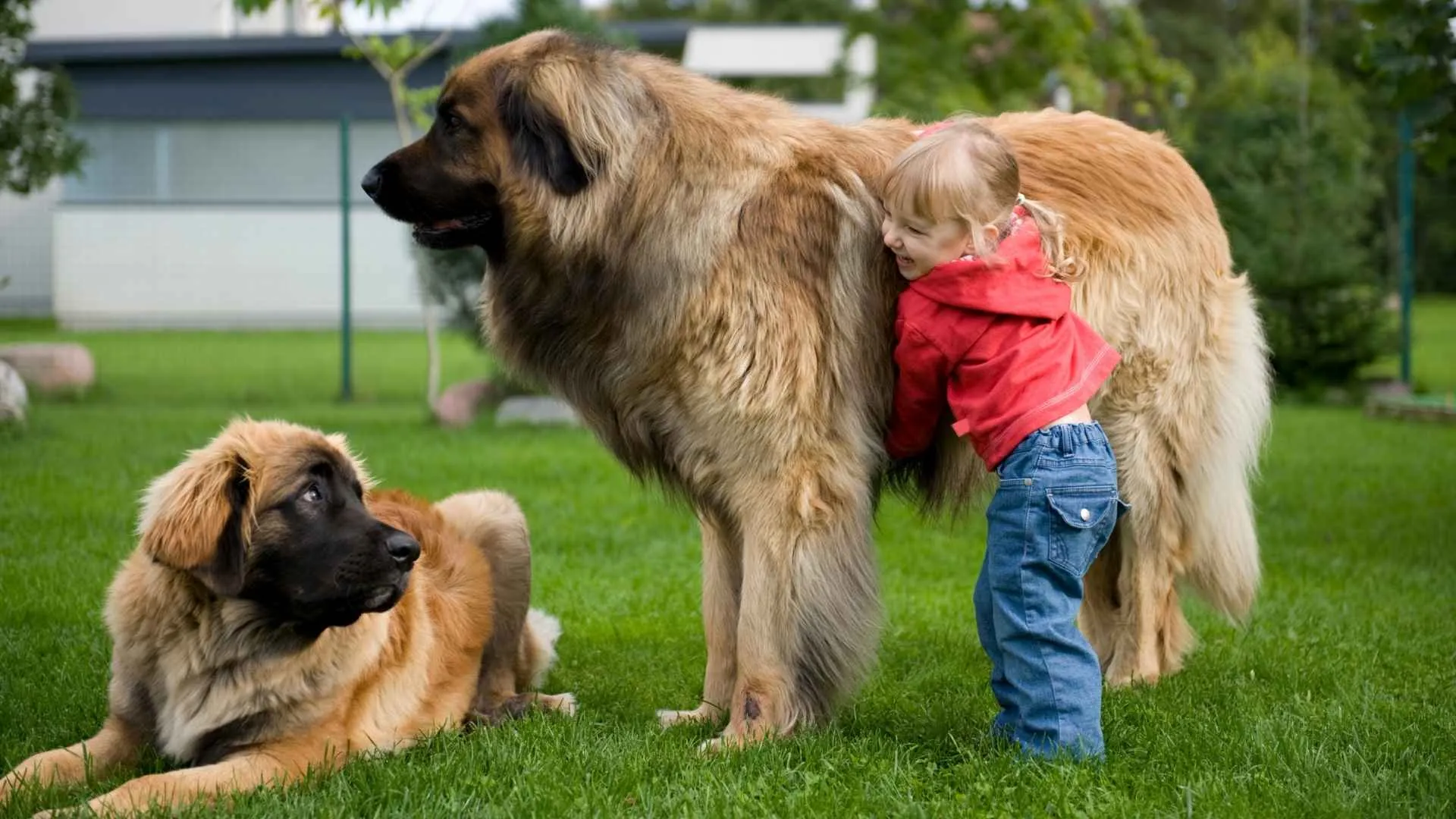
The Leonberger carries itself with a softness that surprises people meeting this giant for the first time. Its calm rhythm at home is one of the reasons families adore its company, especially with children who enjoy gentle, steady dogs.
Why Their Size Affects Longevity
Their large build means their body works harder, which can shorten their lifespan compared to smaller breeds. Many Leonbergers also face health risks linked to deep chests, making regular monitoring important for families who choose this dog.
The following are some important factors to keep in mind:
Greater risk of bloat as they mature
Bones and joints carry more strain over time
Sudden stomach discomfort can become critical quickly
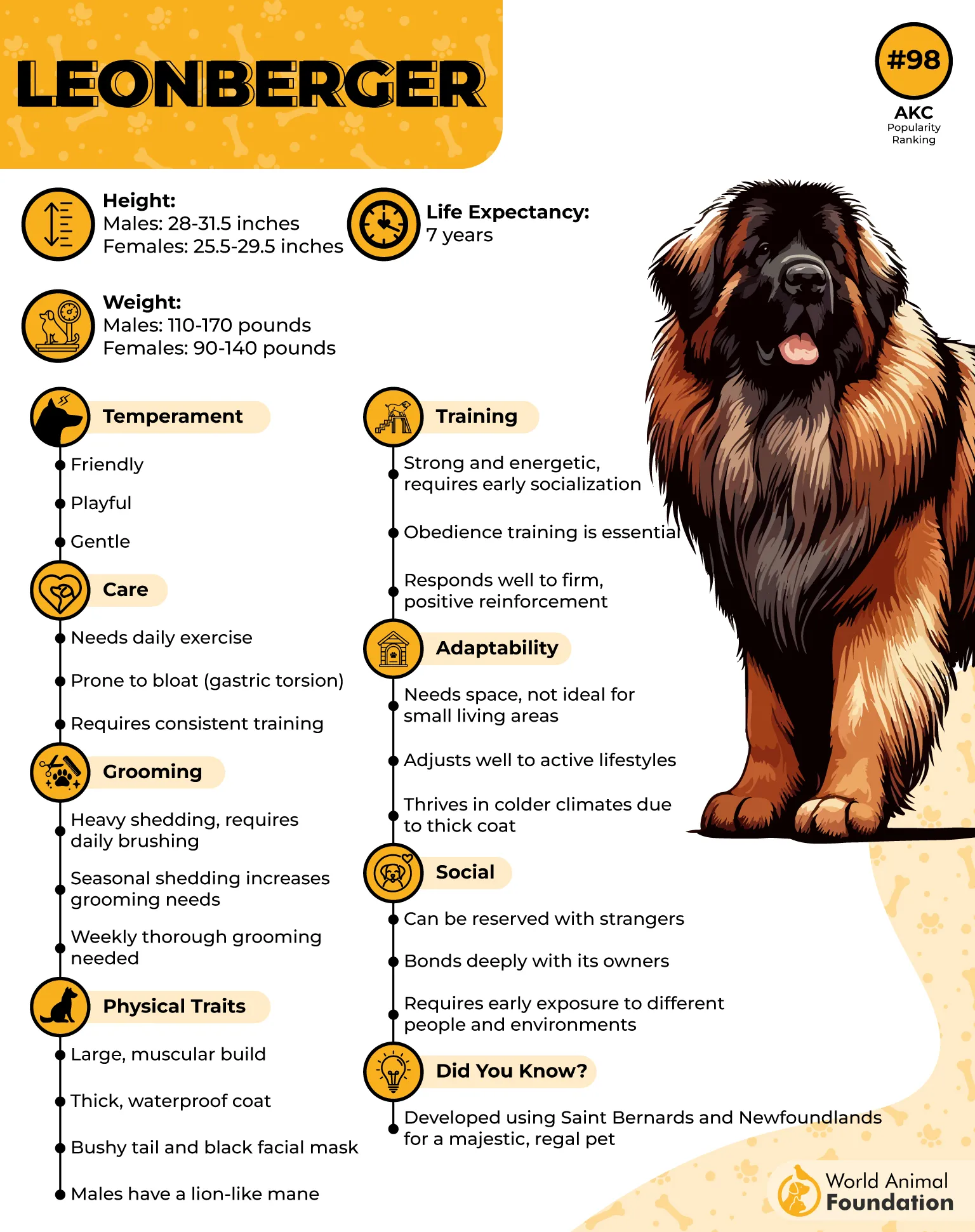
Heartfelt Family Attachment
Their patience makes them easy to live with, and they form warm bonds with every member of the household. This close attachment is part of what makes their shorter lifespan emotionally challenging for many families. The love they give so freely becomes the reason owners choose to be extra mindful of health changes.
7. Bernese Mountain Dog

The Bernese Mountain Dog is known for its calm presence and warm nature, carrying a softness that makes people fall in love instantly. Their affectionate spirit is sincere, and they often shadow their families with quiet devotion.
Health Patterns That Influence Longevity
Berners are large, sturdy dogs built for demanding work, yet their size contributes to certain health risks that affect their years with us. Conditions such as hip and elbow issues, certain cancers, and bloat are well-documented concerns in the breed.
Their health story carries a few key points worth noting:
Early screening helps manage common structural conditions
Breed clubs highlight cancer awareness as an important focus
Bloat education is strongly encouraged in Berner communities
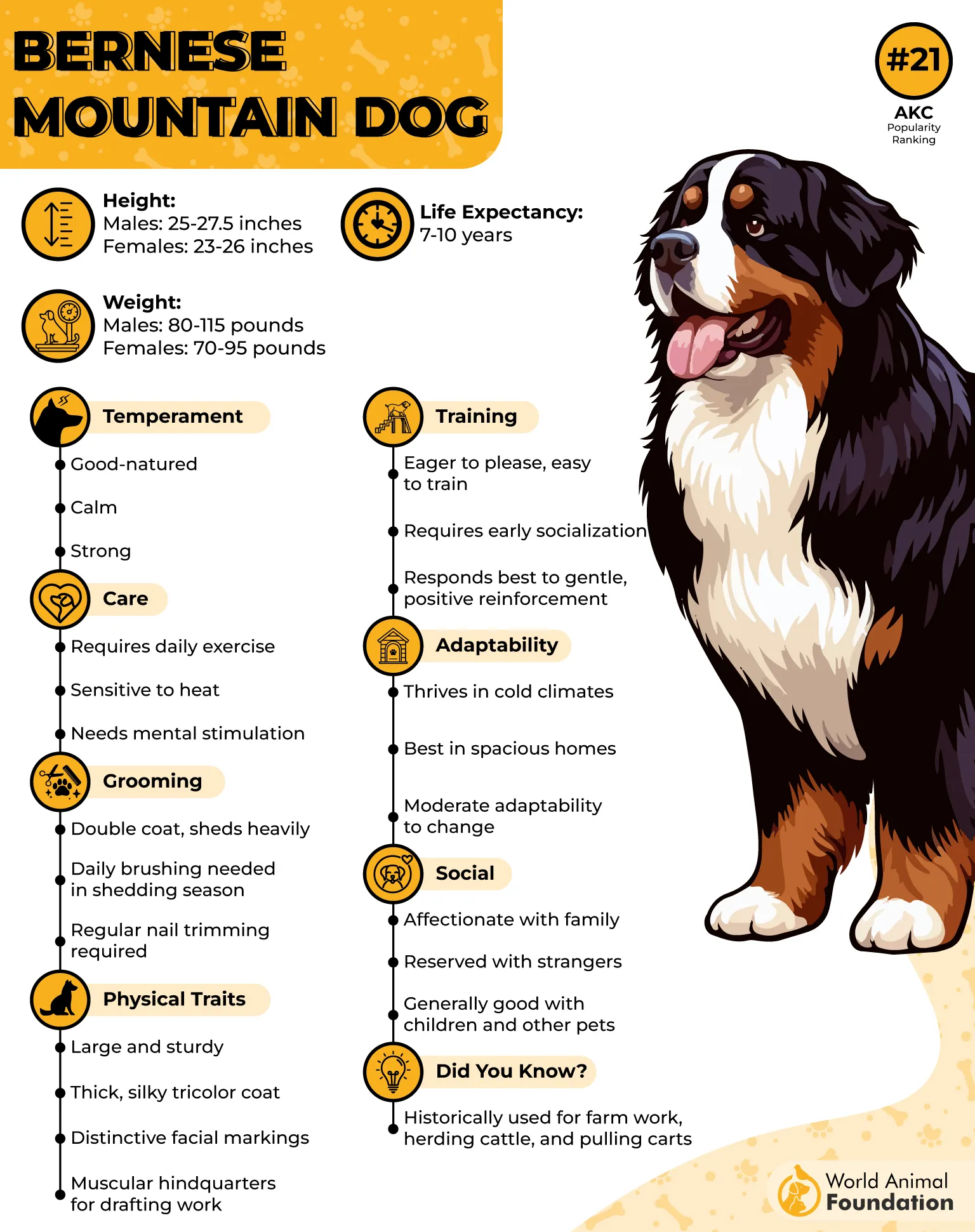
Care Habits That Truly Matter
Simple routines can make a meaningful difference in their comfort as they grow older. Regular ear checks, proper dental care, and awareness of sudden stomach changes are especially important for Berners. Their cooperative nature makes these care habits easier to maintain, which supports their overall well-being.
Conclusion
Reaching the end of this guide brings a clearer view of why some breeds have shorter lives than smaller dogs. Their size, structure, and the way their bodies age shape how long these dogs live, and this understanding helps pet owners prepare thoughtfully. The gentle nature of large dogs often masks the health issues they face, which is why steady care matters from the beginning.
Simple habits, such as a proper diet and proper training, support comfort as the years pass. Their needs may differ from other dogs, yet each one remains a deeply valued furry friend. The lessons drawn from many dogs show how awareness and compassion guide every choice you make.


